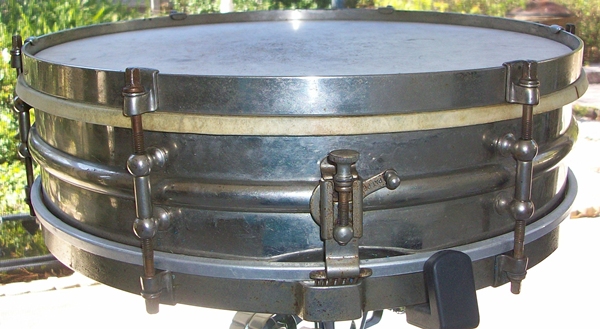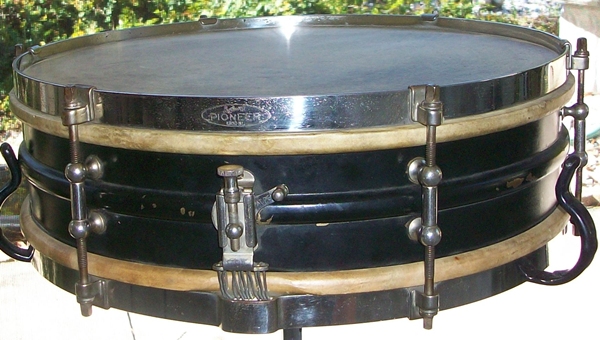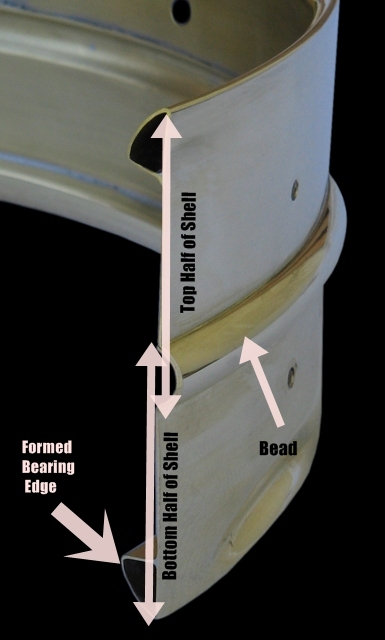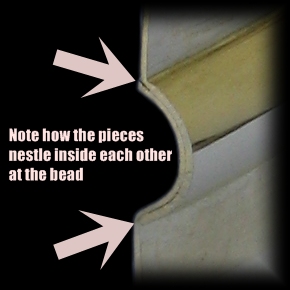Let's put the weight issue to rest first. Here are two of my Ludwigs, the first is the heavy 2 piece shell model:

The second one is the thinner, one piece shell:

Both drums are configured nearly identically, with six lugs, calf heads, and either gut or cable wires (which will account for a few grams difference in weight). Here are the weights: Heavy = 3039 grams, Light = 2722 grams, which is about a half pound difference. Other weights of deeper drums with different lug counts were relatively consistent with my own drums according to this informal (and very unscientific) survey.
This brings us to the matter of the two-piece shell. Specifically, what does that mean? Fortunately, Adrian Kirchler is now reproducing these shells and he has the anatomy of a two piece shell on his web site. As an aside, one of my fantasies is to own one of Adrian's snare drums. He is also the craftsman with whom Ludwig contracted to produce the 100th Anniversary Gold Triumphal snare drum.
I have annotated Adrian's shell photos to show how the shell is constructed and how it goes together during the manufacturing process:

Notice how the shell is made from a top half and a bottom half, both with a formed center bead in which the bottom half nestles inside the top half. This design allowed Ludwig to use a thin brass shell and use the double thickness of the two beads to strengthen the shell. The top and bottom halves of the shell were soldered together. Another design feature that strengthened the shell was the how the bearing edges were formed and soldered to the shell. Not shown are the snare beds, which were crimped into the shell, however they are clearly shown in the photos of my two snare drums in the above photos. They are deep, but narrow, and were perfect for the gut and cable snares that were standard back then. If you have the good fortune to own one of these snare drums I strongly recommend using Puresound 12-strand snare wires with them, which I have found to be a perfect fit to the crimped beds.
One more annotated photo shows the way the shell pieces fit together in more detail:

One quick way to tell whether of not one of the old Ludwigs has the two piece shell is to run your finger along the bottom of the bead on the outside of the shell. If it's a two piece you will feel the seam where it was soldered. I hope this clears up some of the mystery about what is meant by a 2 piece shell.
No comments:
Post a Comment